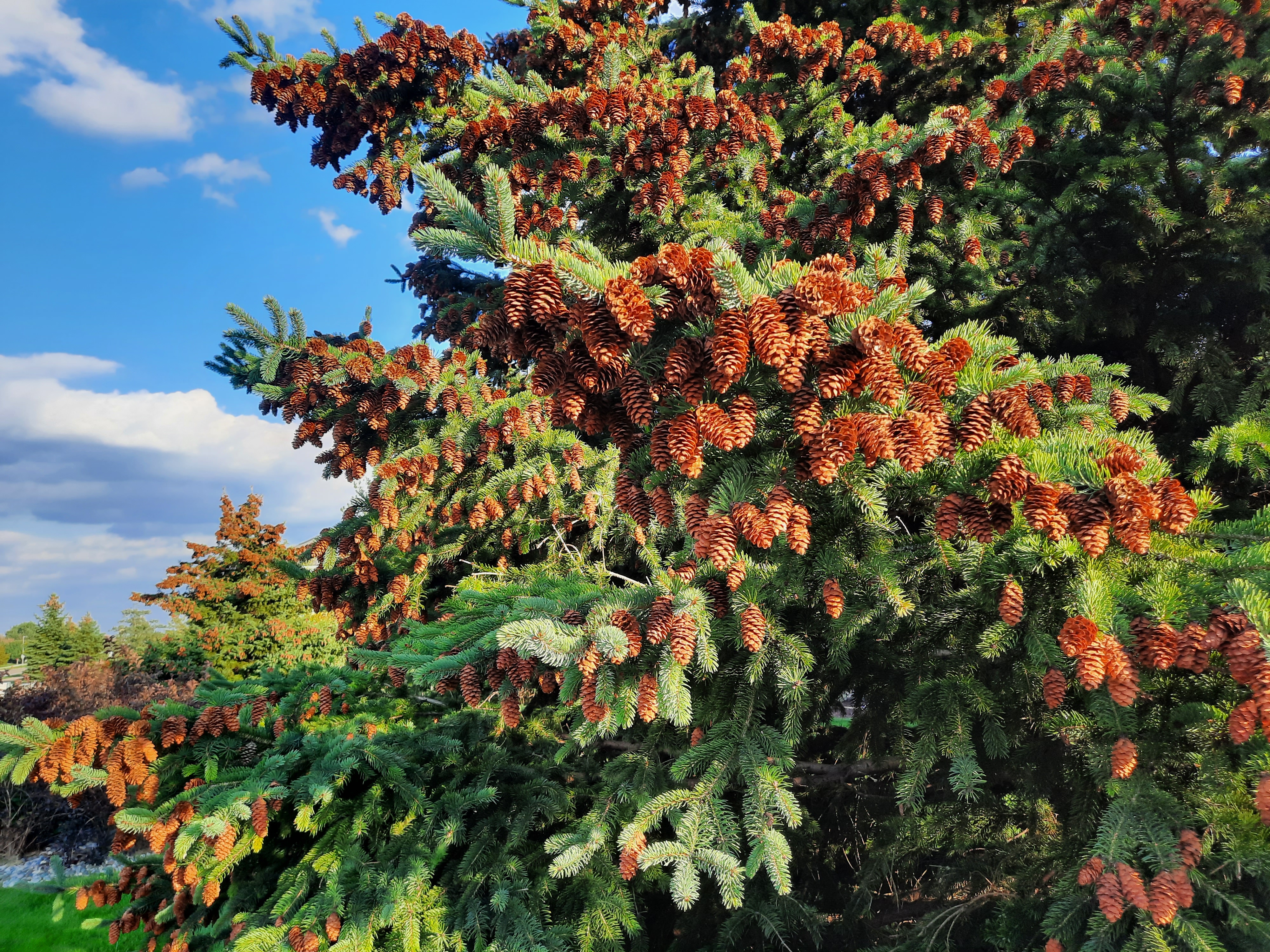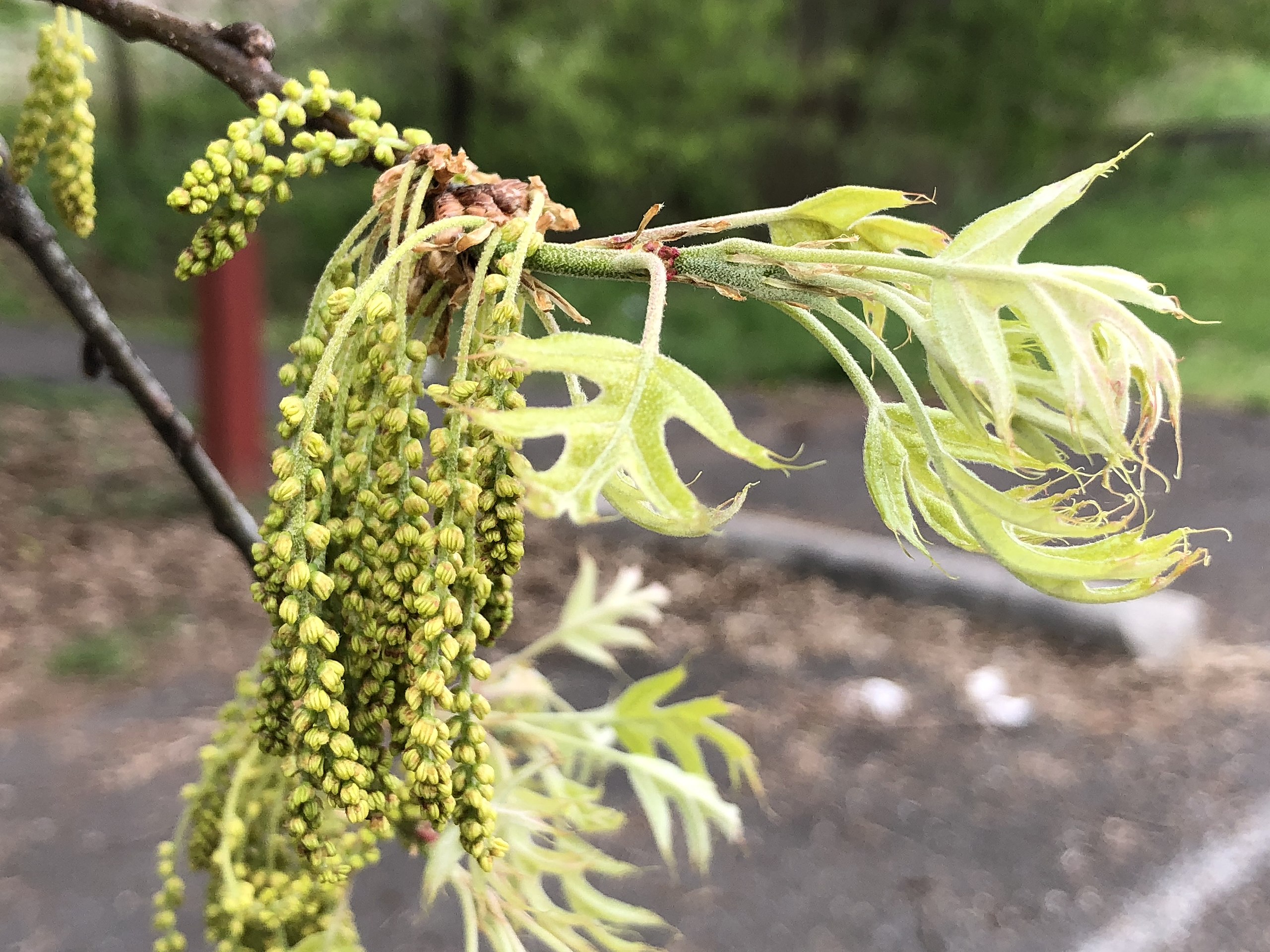Cones and acorns appear in copious quantities this fall
Past tree stresses contribute to heavy crop of cones and nuts.

If you’ve noticed an alarming amount of acorns raining down on your deck or that your evergreens are covered with cones, you’re not alone. Oaks, black walnuts and other nut trees have produced a bumper crop of nuts this year, referred to as a seed mast (Photo 1). At the same time, many conifers, notably spruces, firs and Douglas-firs, have also produced huge cone crops (Photo 2).

Why are there so many acorns, nuts and cones this year?
To look at the reasons behind this bounty of nuts and cones, we need to work our way back through their development. In the case of the heavy mast of acorns and black walnuts produced this year, the nuts we see on the sidewalk or have to dodge with our bicycle tires began as flowers produced earlier this spring. If you are like most people, there is good chance you never noticed these flowers because they are pale green and inconspicuous on the trees (Photo 3). These flowers, or catkins, emerge from buds that were formed the previous year (i.e., 2020).

For much of Michigan, the late spring and summer 2020 were relatively dry. Trees often increase flower bud production when they are under stress, so the dry weather in 2020 resulted in increased production of flower buds that emerged in spring 2021 to produce the acorns we’re stepping on this fall. For spruces and firs, it is similar phenomenon; tree stress in 2020 resulted in increased production of cone buds that emerged and developed in 2021. In addition to weather in the previous year, reproduction in trees is also influenced by alternate bearing cycles, where heavy mast years alternate with lighter years.
Lastly, weather when oak or walnut catkins are out can influence the mast as flowers may be subjected to damage from late frost, or prolonged, wet weather can reduce pollination. In the case of 2021, all of these factors coalesced into a perfect storm for a heavy year for acorns, nuts, and cones.
Are all those nuts and cones harming my tree?
For the most part, the nuts and cones we’re seeing this year are mostly just a nuisance. For folks that manage wildlife, heavy mast years are a boon as acorns and other nuts provide high-fat food that is valuable to deer, turkey and other wildlife. Heavy nut or cone production can cause reductions in growth as trees shift their available resources to producing reproductive structures instead of growth. However, Michigan State University Extension notes that heavy mast years are part of a natural cycle and should not cause long-term issue for trees.



 Print
Print Email
Email

